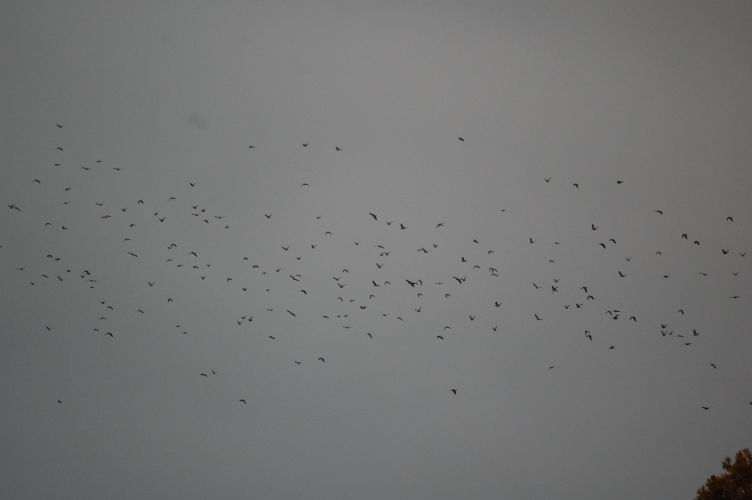This
Month on the Emmbrook
What to look for if you are out and about in
DECEMBER
General

December 21st is the Midwinter Solstice and our shortest hours of daylight. Plants are in their dormant stage and there are very few signs of growth at this time. It also marks the official arrival of thr winter. This month is, of course, dominated by the run up to Christmas. It is now, perhaps more than any other time that we bring plants from the countryside into our home. Evergreens such as Holly, with its rosy berries (only on the females plants) are used in wreaths, along with Ivy and fir cones too. The custom of decorating homes with evergreen branches dates back to pre-Christian times. Holly,Iivy and Mistletoe were thought to have magical powers. A European tradition states that whoever brings the first Holly into the house at Christmas will rule the house for the following year.
Birds
Cold nights and damp days make winter inhospitable for lots of insects and plants, while most amphibians and some mammals have gone into hibernation. But while the rest of the animal kingdom sleeps, the landscape is flooded with visiting and resident birds. Amongst the most likely birds to be seen in the gardens, woodlands and fields alonside the Emm are flocks of roaming Tits and Finches (such as Chaffinch and Brambling). These are often joined by the occasional Tree creeper and Nuthatch. With every year that passes there are more reports of Blackcaps and even Chiffchaffs over wintering; you may be lucky to see them amongst these flocks. Rooks and Crows seem to be everywhere once out of town, and Jays and Magpies are hard to miss also. Robins are one of the first species to start singing in earnest, with the males marking out their territories in readiness for the coming breeding season
At night Tawny owls may be heard staking out territory, with both the male and the female birds creating the classic owl 'tu-wit tu-who'.
 Love them or hate them, huge numbers of woodpigeons will be on the move within December. Individual flocks can number in the tens of thousands.
The movement is generally from the north to the south-west and is most obvious on clear cold days with light winds.
We aren't really sure where these birds come from or where they are going to but it would seem likely that they are moving from northern Europe and are making their way to France and possibly southern Europe.
When this migration is underway it is a very impressive sight and one that a lot of people overlook.
Love them or hate them, huge numbers of woodpigeons will be on the move within December. Individual flocks can number in the tens of thousands.
The movement is generally from the north to the south-west and is most obvious on clear cold days with light winds.
We aren't really sure where these birds come from or where they are going to but it would seem likely that they are moving from northern Europe and are making their way to France and possibly southern Europe.
When this migration is underway it is a very impressive sight and one that a lot of people overlook.
Insects
Very few insects can be found flying around during December. The exception may be clouds of male Gnats dancing in the hope of attracting a passing female. Look into your shed or attic now and you may come across adult Small Tortoiseshell or Peacock butterflies waiting out the winter.
Some Slugs and Snails still brave the conditions. Their slimy trails differ in that snails trails are not continuous, unlike Slugs.
Other Wildlife
All of our local amphibian and reptile species (i.e. common toad slow-worm; common newt, smooth newt , great crested newt and grass snake) are all hidden away under ground until spring, and sometimes together in mixed groups. Only the common Frog chooses a different approach by hiding at the bottom of a pond.
Foxes will be making their intentions loud and clear this month as their mating season ensues. Vixens (females) wail and scream, and dogs (males) bark to find mates across the landscape. They also become easier to spot as they search and flirt. There are more urban Foxes now than ever, so chances of seeing and indeed hearing their displays are no longer confined to fields and hedgerows. Their cubs will be born next January / February.
Plants & Trees
Winter evergreens provide a welcome touch of green in mid-winter. Only the female holly tree has red berries and holly berries were traditionally used in Christmas decorations. Mistletoe was always a magical plant and symbol of fertility and today is still brought into homes at Christmas for people to kiss under! Mistletoe is actually one of our most easily recognised but least understood plant. In Britain we have just one species of Mistletoe Viscum album and the latin name refers to the berries which are white (album) and contain a very sticky, viscous fluid (Viscum). Did you know, mistletoe's name comes from Anglo-Saxon and means “dung on a twig” - not so romantic after all! Ivy may be common but it’s great for wildlife. See if you can spot woodpigeons or other birds feeding on the black berries of ivy in late winter.On chilly mornings, plants and seed heads such as teasel can take on artistic frosty forms. It’s worth keeping seed heads standing in your garden through the winter, not only for their attractiveness for us on cold winter mornings, but for birds looking for food and insects that hide inside through the winter.
